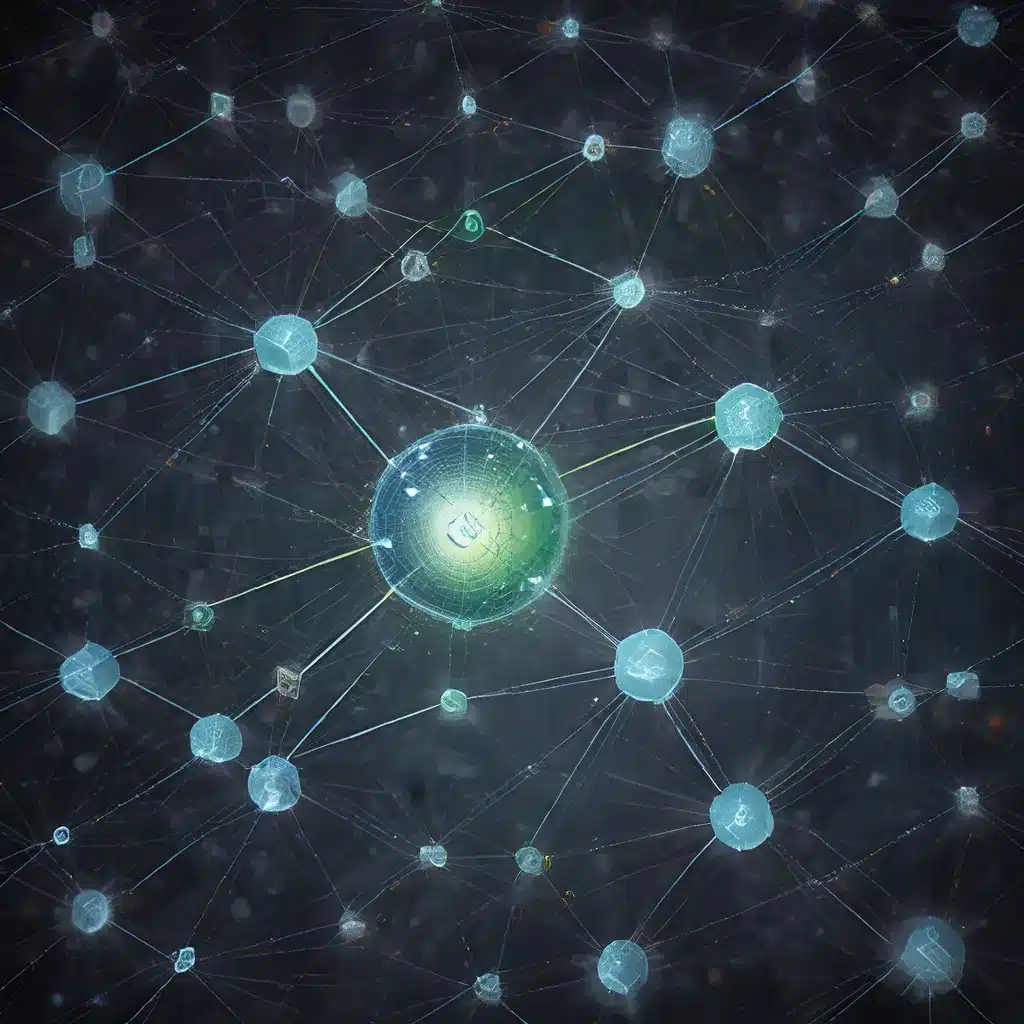
Navigating the Complexities of Sensor Network Design
As the world becomes increasingly interconnected through the rapid growth of the Internet of Things (IoT), the importance of sensor networks has never been more pronounced. These intricate systems, comprised of numerous sensors and network nodes, play a crucial role in collecting, processing, and transmitting vast amounts of data, powering a wide range of applications across industries.
However, designing and deploying secure and efficient sensor networks is no easy feat. Developers must navigate a complex landscape of technical challenges, from ensuring data integrity and privacy to optimizing energy consumption and network performance. In this article, we delve into the cutting-edge distributed algorithms that are revolutionizing the way sensor data is aggregated and managed, paving the way for a future of smart, resilient, and transparent sensor network systems.
Distributed Algorithms: The Backbone of Secure Sensor Data Aggregation
At the heart of secure and transparent sensor data aggregation lies the use of distributed algorithms. These algorithms, which are executed across multiple network nodes, enable the efficient and tamper-resistant collection, processing, and transmission of sensor data.
One of the key benefits of distributed algorithms is their ability to mitigate the risks associated with centralized data management systems. In a centralized approach, a single point of failure can compromise the entire network, leaving it vulnerable to cyber-attacks and data breaches. Distributed algorithms, on the other hand, leverage the collective processing power and redundancy of multiple nodes, ensuring that the failure or compromise of a single node does not bring down the entire system.
Research has shown that distributed algorithms can significantly enhance the security of sensor networks by implementing secure data aggregation protocols, cryptographic techniques, and Byzantine fault-tolerant mechanisms. These advanced algorithms ensure that sensor data is encrypted, authenticated, and validated throughout the entire data lifecycle, from collection to storage and transmission.
Transparency and Accountability in Sensor Data Management
Alongside security, transparency and accountability are crucial considerations in the design of modern sensor networks. Distributed algorithms play a pivotal role in promoting transparency by enabling tamper-evident and verifiable data aggregation processes.
Emerging techniques, such as blockchain-based sensor data management, leverage distributed ledger technologies to create an immutable record of sensor data transactions. This allows for real-time monitoring and auditing of the data collection, processing, and sharing activities, ensuring that all stakeholders can verify the integrity and provenance of the sensor data.
Furthermore, distributed algorithms can facilitate the decentralized management of sensor networks, empowering individual nodes or edge devices to participate in the decision-making processes. This democratization of sensor network governance can foster greater trust and accountability among users, as they can actively monitor and validate the actions taken by the network.
Optimizing Energy Efficiency in Sensor Networks
One of the fundamental challenges in sensor network design is energy management. Sensor nodes, often deployed in remote or hard-to-access locations, rely on limited battery resources to power their operations. Inefficient energy consumption can lead to premature node failures and network disruptions, undermining the overall effectiveness of the sensor network.
Distributed algorithms play a crucial role in optimizing energy efficiency within sensor networks. Load-balancing algorithms, for example, can distribute computational tasks across multiple nodes, ensuring that no single node becomes overburdened and drains its battery prematurely. Energy-aware routing protocols, on the other hand, can dynamically adjust the data transmission paths to minimize the overall energy consumption of the network.
Moreover, collaborative sensing algorithms enable sensor nodes to coordinate their activities, reducing redundant data collection and minimizing the need for continuous data transmission. By leveraging in-network processing and aggregation, these algorithms can significantly reduce the energy demands of the sensor network while maintaining the quality and integrity of the collected data.
Unleashing the Potential of Sensor Networks in Real-World Applications
The advancements in secure, transparent, and energy-efficient sensor network design, powered by distributed algorithms, have paved the way for a wide range of transformative applications across various industries.
In the smart city domain, sensor networks equipped with distributed algorithms can monitor and manage critical infrastructure, such as traffic flow, air quality, and public utilities, enabling real-time decision-making and proactive maintenance. Similarly, in the healthcare sector, sensor networks can track patient vital signs, detect early warning signs of health conditions, and securely transmit data to healthcare providers, empowering personalized and preventive care.
In the agricultural industry, sensor networks can optimize crop irrigation, monitor soil conditions, and detect pest infestations, helping farmers maximize their productivity while minimizing resource consumption. Moreover, in the industrial domain, sensor networks can monitor equipment performance, predict maintenance needs, and optimize production processes, leading to enhanced efficiency and reduced operational costs.
Conclusion: Embracing the Future of Sensor Networks
As the world continues to embrace the transformative power of the Internet of Things, the role of sensor networks has become increasingly vital. By leveraging the secure, transparent, and energy-efficient capabilities of distributed algorithms, the sensor network industry is poised to unlock new frontiers of innovation, driving sustainable and intelligent solutions that will shape the future of our connected world.
Explore the latest advancements in sensor network technology and discover how you can harness the power of distributed algorithms to transform your industry or research project. Visit sensor-networks.org to learn more and stay at the forefront of this rapidly evolving field.